The Architecture of the Yokohama Museum of Art
The Yokohama Museum of Art was designed by Tange Kenzo (1913-2005), regarded as a master of Japanese modernist architecture. For Tange, whose architectural designs included over 400 public and private buildings over the course of his career, the Yokohama Museum of Art was the first museum he designed in Japan.*
Celebrating its 40th anniversary in 2023, the Minato Mirai 21 district is a planned urban area built on the site of a former shipyard. From its inception, the Yokohama Museum of Art was positioned symbolically in the center of the district, stimulating creative approaches about what kinds of relationships could be built between the museum and this new district. The thinking of the myriad people involved in the urban planning process was ultimately entrusted to Architect Tange Kenzo.
Visitors to the Yokohama Museum of Art are greeted by a façade overlooking the park. In the base of the eight-story semi-cylindrical tower in the center of the building, the lower levels with the exhibition floor, the Workshop Studio on the far right, and the Art Library on the far left. The building’s architecture itself is built to symbolize the fundamental values of the Yokohama Museum of Art: See, Create, and Learn.
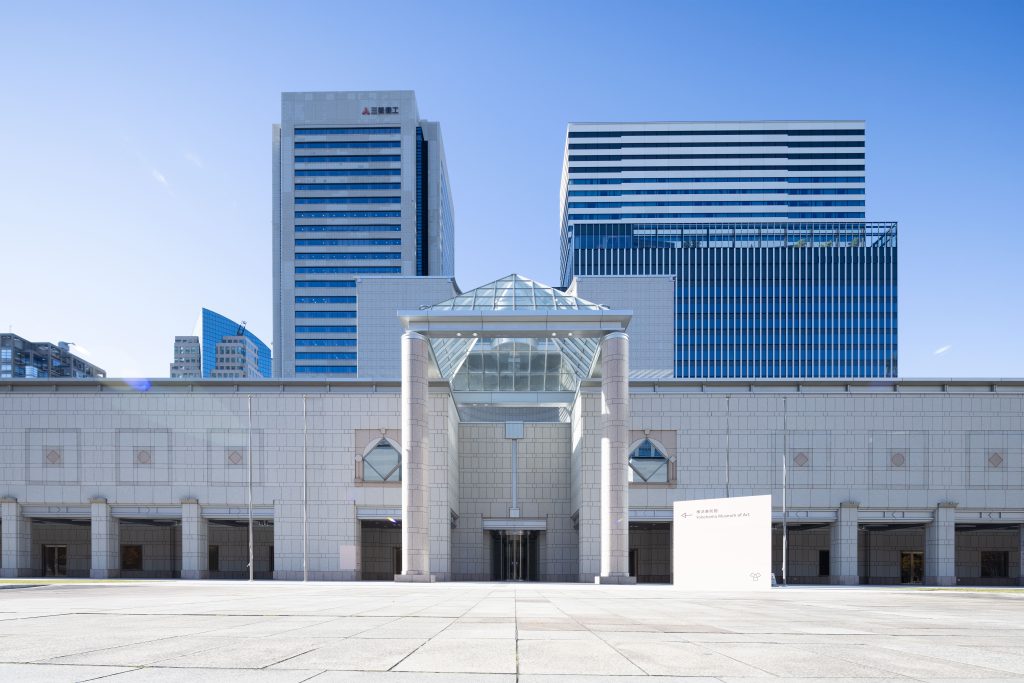
Symmetry and the circle – square motifs
Our characteristic long, symmetrical façade – did you notice the pattern of alternating circles and squares on the exterior wall? These are actually false windows, a trompe l’oeil on the wall surface.
Looking at the building from directly above, the exhibition floor features a striking arrangement of circular and square exhibition rooms positioned symmetrically. The circle-square motif is at play throughout the museum, including the great staircase in the Grand Gallery.
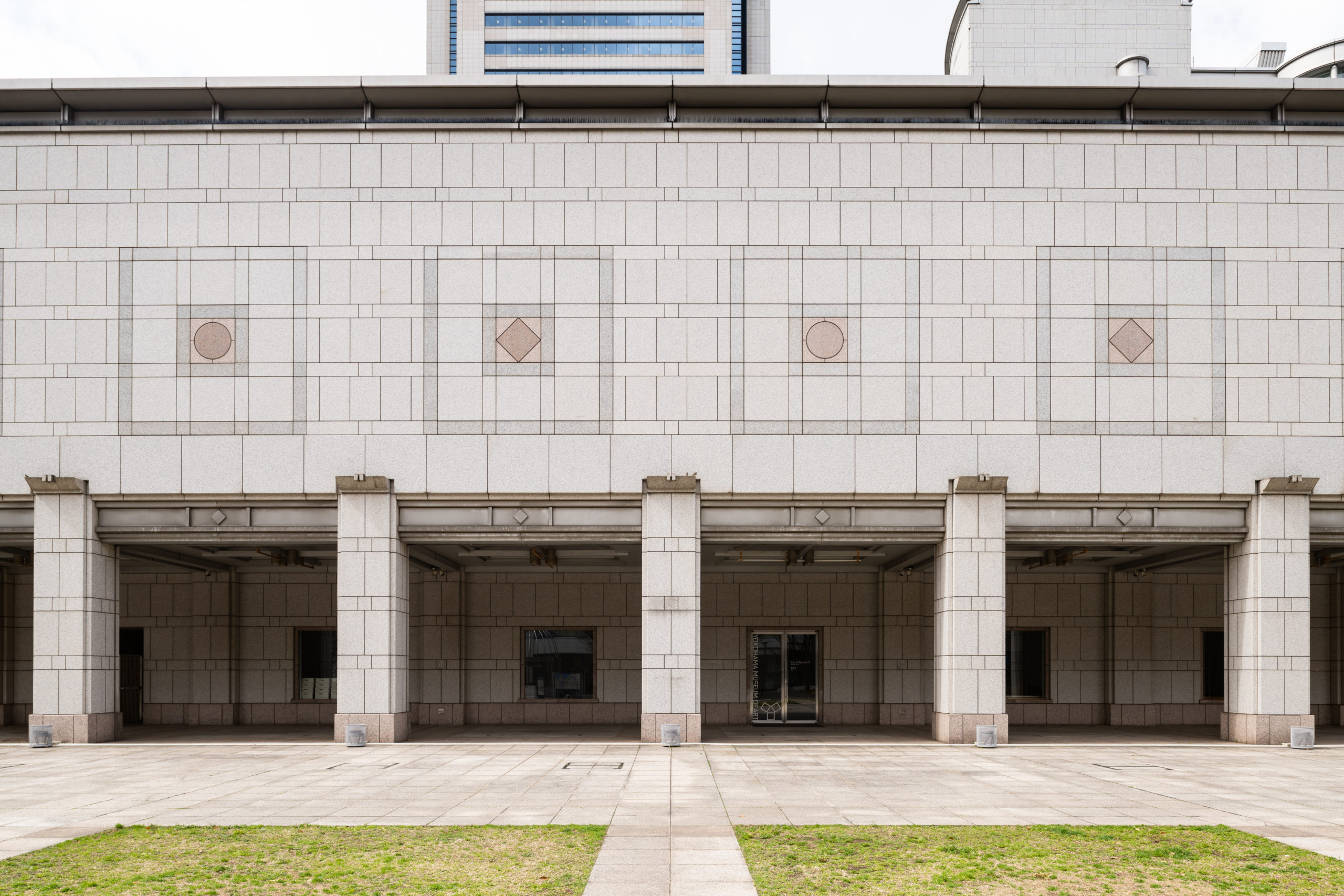
Photo: KATO Ken
The Value of Spaces with No Fixed Purpose
Tange’s architecture conceived of the museum not only as a place for art appreciation, but also as a center for the community to interact and enjoy a variety of cultural activities.
Tange is said to have remarked, “Spaces without a clear purpose are important,” including those where people stand before viewing the art, move from one exhibition room to another, or leave an exhibition room and make their way home. As the Grand Gallery symbolizes, the Yokohama Museum of Art holds distinctive spaces where people can freely come and enjoy at will.
Now, let’s enter the building from the park side…
Portico
The Portico is a 165-meter-long corridor that serves as a semi-exterior space, creating both an approach from the outside to the inside as well as a connection of the left and right wings of the building with the central wing. And it is a space that invites us into a world where we can actively See, Create, and Learn.
It is a space where we can take a break from the sun and enjoy some conversation. Plus, as Tange is said to have mused, “Wouldn’t it be wonderful to have a space where we could walk around and feel the air of the plaza without getting rained on?”
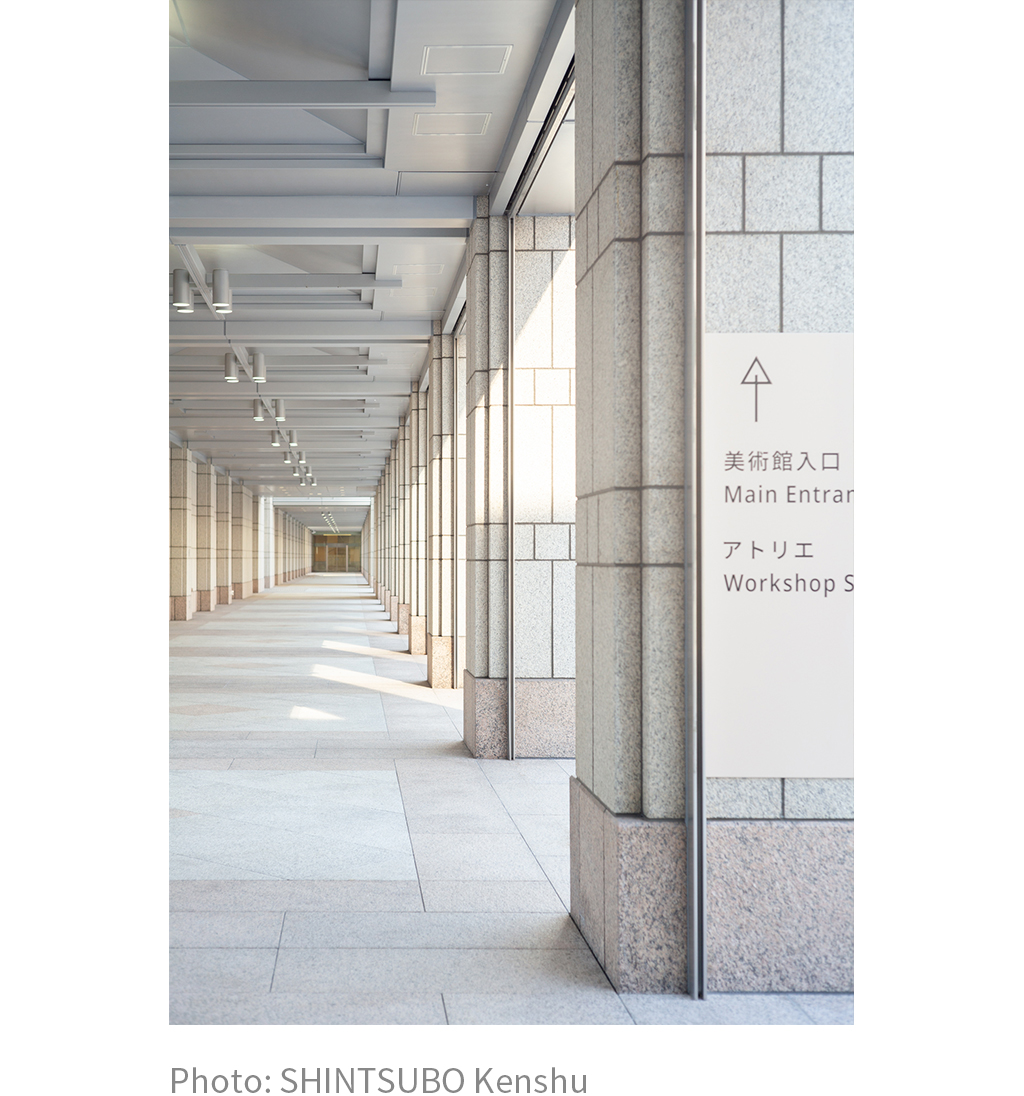
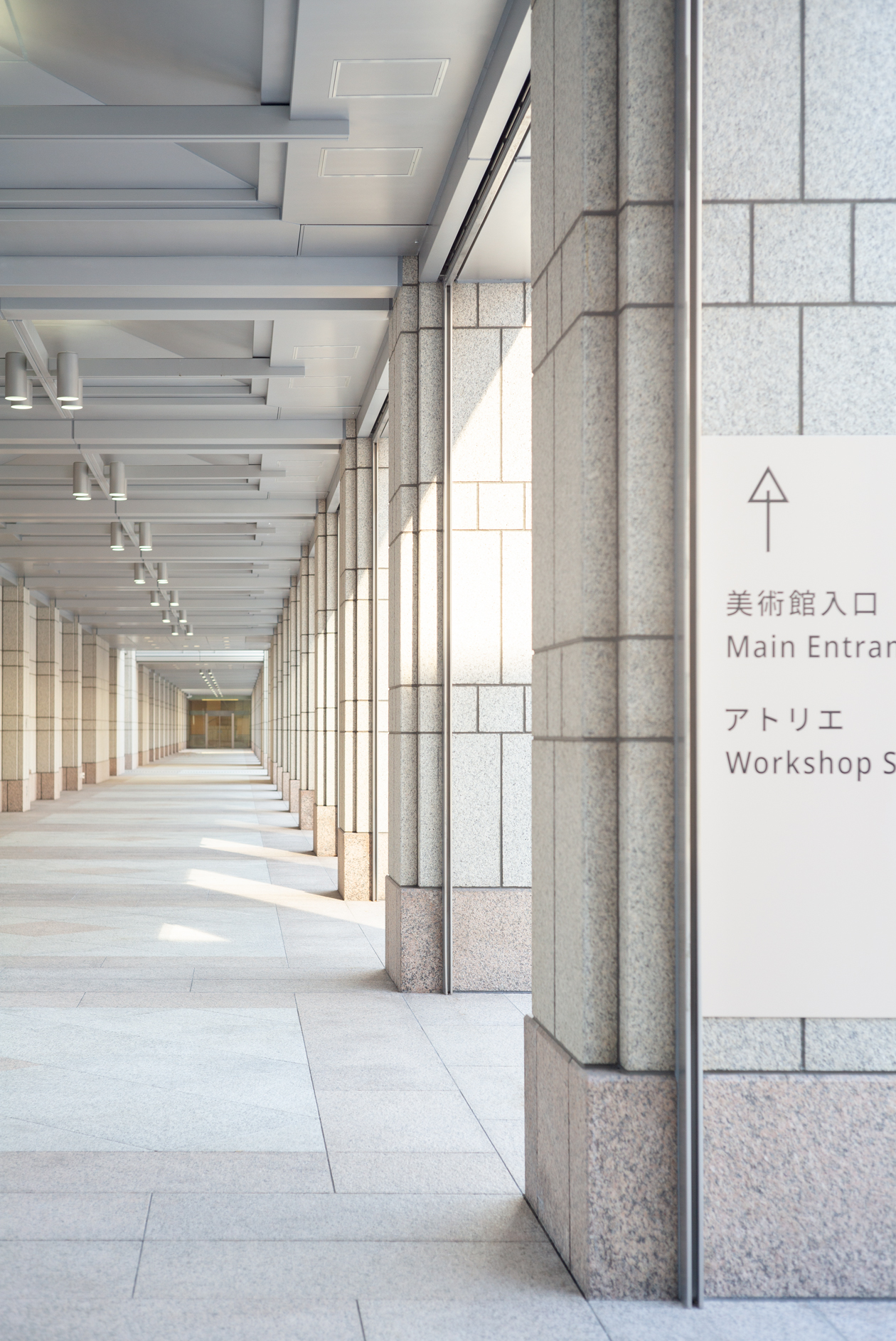
The Grand Gallery
Upon entering the building from the parkside entrance, visitors find themselves in a large, open space marked by an abundance of granite. Appropriately named the “Grand Gallery,” this is the most impressive space in the Yokohama Museum of Art, with a ceiling height of approximately 16 meters, with floorspace of approximately 63 meters in width and 16 meters in depth.
The glass ceiling with retractable louvers lets the natural light come pouring in, giving visitors a direct experience of the changing seasons and with their different lights. To each side, staircase-like spaces rise up to the exhibition floor, creating a distinct space with a unique atmosphere.
The Grand Gallery not only welcomes visitors, but also plays a civic role as an indoor plaza for the people of the city to enjoy.
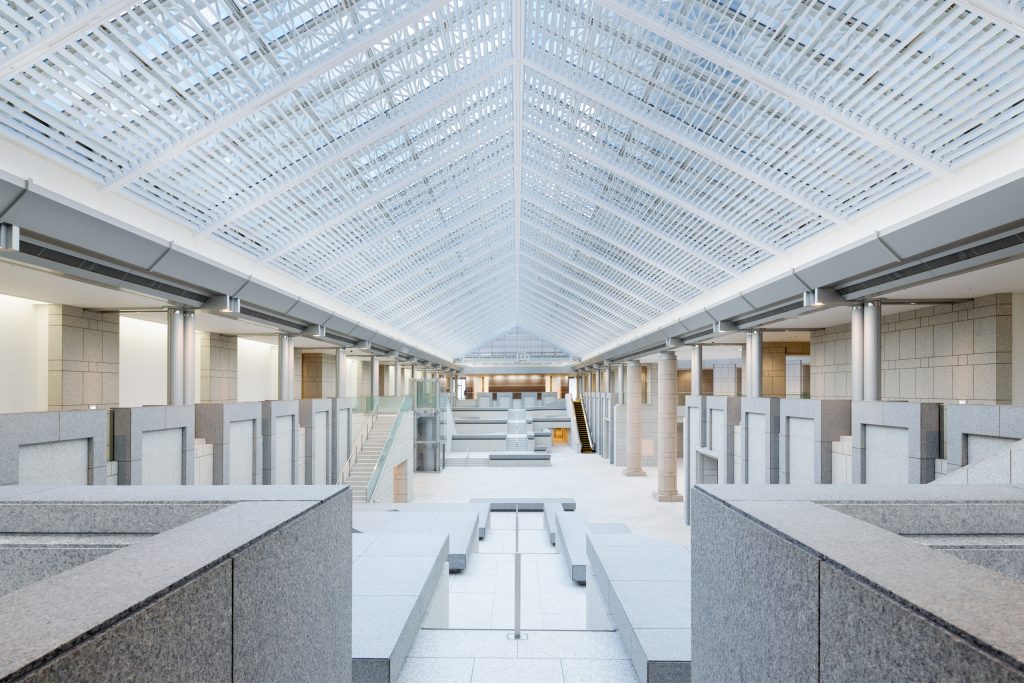
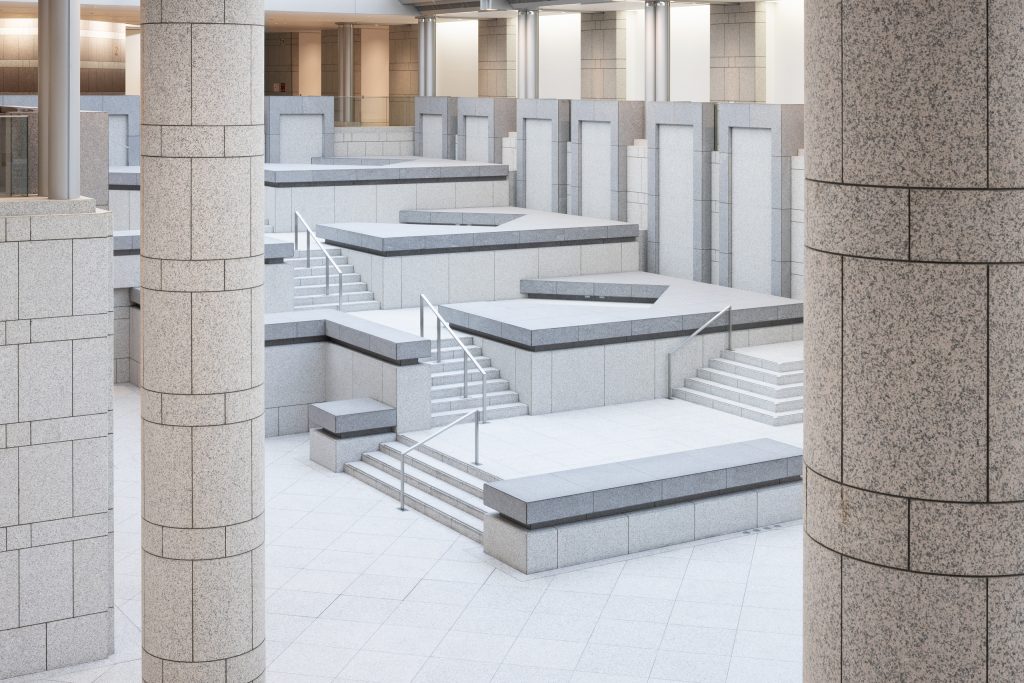
Exhibition Floor
Moving up from the Grand Gallery, we arrive at the exhibition floor. Seven exhibition rooms flank a corridor around the atrium of the Grand Gallery, designed so that visitors must pass through this corridor space each time they move from one room to another.
In the space in front of the exhibition rooms, visitors can enjoy a panoramic view of the Grand Gallery, take a seat on a chair for a little rest, or reflect on the works they have just seen.
Like the Japanese principle of yohaku, or “blank spaces,” in art, the corridor, the Grand Gallery, and other intentionally purposeless spaces are one of the unique features of the Yokohama Museum of Art.
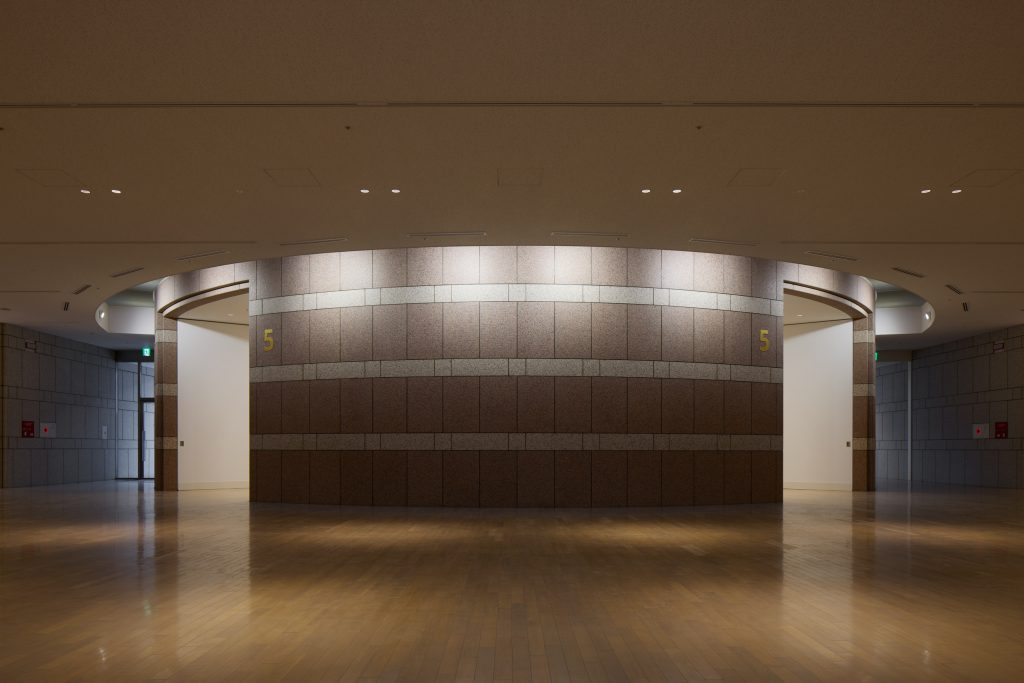
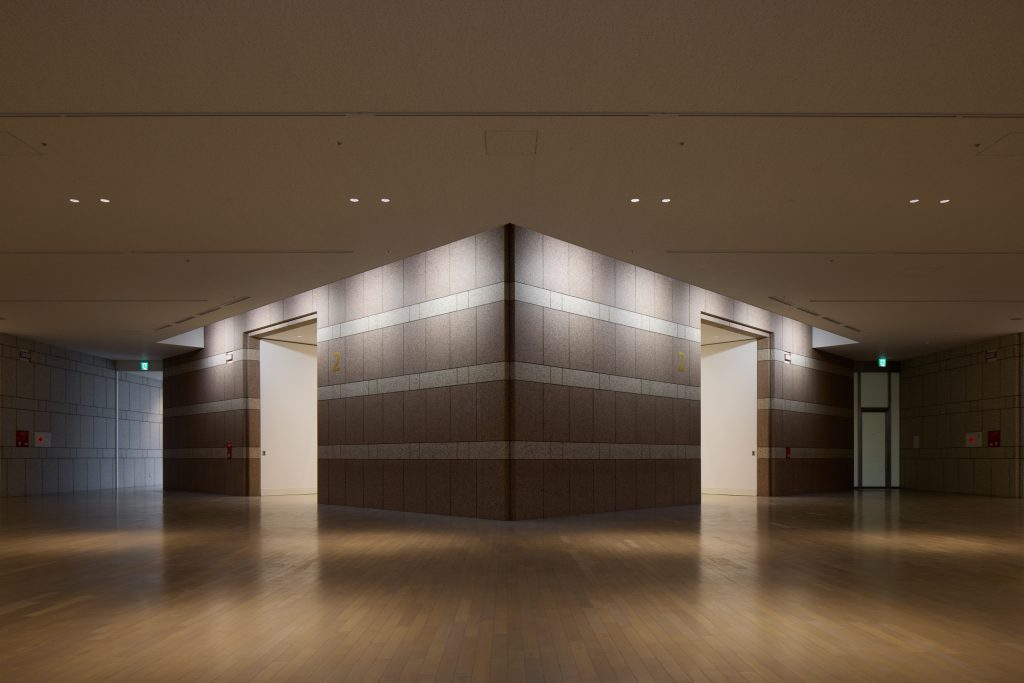
Philosophy of Architect Tange Kenzo
Tange conceived many of his masterpieces keeping carefully in perspective how a building should exist in relation to a city, considering both the building’s interior and its surrounding exterior spaces to provide a kind of plaza where many people could gather.
The building was designed to be a new art and culture center where people can not only “see,” but also “create” and “learn.” This means an architecture that balances the functional ease-to-use as a museum where citizens can comfortably appreciate art and create it, with an appearance that marks it as a monument and cultural symbol.
The current building was used as the pavilion for the Yokohama Exotic Showcase, which opened in March 1989, then after the Showcase ended in November of the same year opened officially as the Yokohama Museum of Art.
Profile
Born in Osaka in 1913, Tange Kenzo graduated from the Department of Architecture, Faculty of Engineering, Tokyo Imperial University (which became the University of Tokyo) in 1938 and began graduate studies at the same university in 1941. After graduation, he taught at his alma mater from 1946 to 1974, and in 1987 became the first Japanese architect to win the Pritzker Prize, considered the Nobel Prize of architecture. He served as mentor to many outstanding architects, including Maki Fumihiko, Isozaki Arata, Kurokawa Kisho, and Taniguchi Yoshio, and was also involved in education at Politecnico di Milano, Harvard University, and other universities around the world. He is also known for his wide-ranging engagements and collaborations across genres with artists such as Isamu Noguchi and Okamoto Taro, photographer Ken Domon, and artist Shinoda Toko, etc. He passed away in March 2005, leaving a legacy of structures as iconic as the Hiroshima Peace Center and the Yoyogi National Stadium for the 1964 Tokyo Olympics.
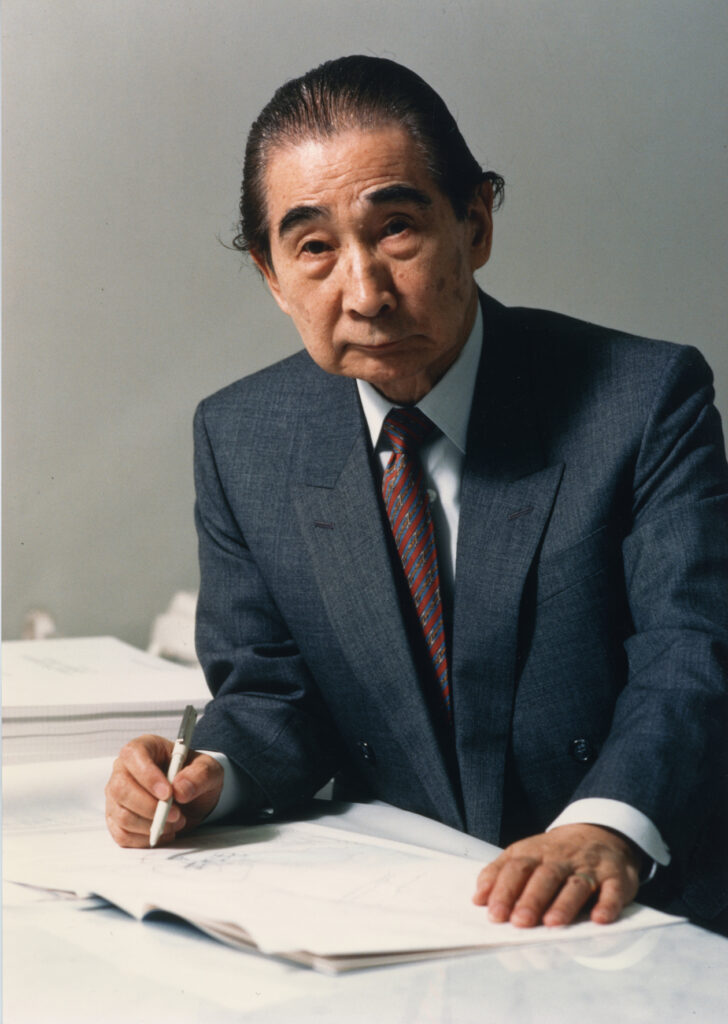
Photo by SAITO Koichi
Courtesy of Saito Koichi Photo Office
Note:
* The current Kurashiki City Art Museum was originally designed in 1958 to serve as the Kurashiki City Hall.
References:
- Yokohama Museum of Art 30th Anniversary: “Bijutsu de tsunagu hito to mirai” (30th Anniversary of Yokohama Museum of Art: Your Museum, Your Future; Kawade Shobo Shinsha Ltd. Publishers, 2019)
- “Yokohama City Art Museum (temp. name) Foundational Planning News No. 1”, from “Dialogue between Architect Tange Kenzo and Saigō Michikazu [then] Mayor of Yokohama City” (Civic Cultural Affairs Office, Civic Affairs Bureau, City of Yokohama, 1986).
- Shimin-graph Yokohama No. 66 (Public Relations Center, City Information Office, Civic Affairs Bureau, City of Yokohama, 1988)
Overview of the Architecture
Location: 3-4-1 Minatomirai, Nishi-ku, Yokohama City, Kanagawa Prefecture
Design: Kenzo Tange Associates (at the time)
Site area: 19,803 ㎡
Building area: 9,621 ㎡
Total floor area: 27,014 ㎡
Structure: Steel-framed reinforced concrete, 8 stories (partly 3 stories)
Exterior walls: Granite jet-burner finish









